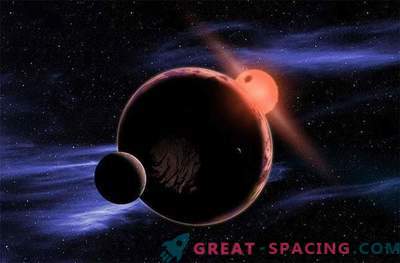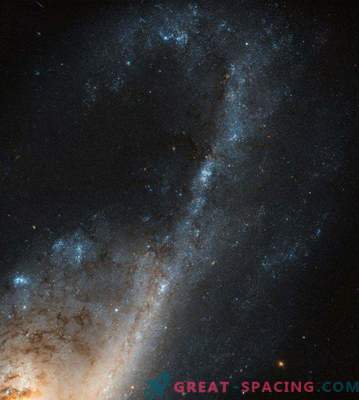
Is there life beyond earthly limits? Scientists have found that in our galaxy a lot of exoplanets, among which there are those that have suitable conditions. Such worlds are located in habitat zones and can contain water in a liquid state.
But this does not necessarily lead us to life forms. Planets near red dwarfs - the most common stars in the Milky Way - are most often viewed.
Influence of stellar wind
Models show that stellar winds (constant bombardment by charged particles) can seriously deplete the atmospheric layer over hundreds of millions of years. Traditional climate models take into account only the surface temperature in habitats. But the stellar wind leads to long-term erosion and destruction of the atmosphere.
To go deeper into the question, we decided to study the time scale of atmospheric confinement on Proxima Centauri b, 4 light years away from us. Also checked the duration of the survival of the oceans in the “water worlds”.
Double Effect
The researchers imitated the photochemical influence of stellar wind and EM erosion. Photons in the stellar wind ionize the atoms and molecules in the atmosphere of charged particles, allowing the pressure and the EM force to pull them into space. This process can lead to atmospheric loss.
Model Proxima Centauri b shows that high atmospheric pressure will lead to the release of the atmosphere and it will not last long enough to develop our usual life on the surface. True chances are increased if there is a low pressure and a powerful magnetic shield.
Evolution of habitability zone
The situation of the study is complicated by the fact that over time, the habitable area can evolve. Therefore, high stellar wind pressure at an early stage can increase the rate of atmospheric release. As a result, the atmospheric layer will collapse early even with a powerful magnetic field. In addition, the approximate planets can be in the tidal block (turned to the star by one side).
If we talk about the water worlds, we identified three conditions:
- Winds affecting the modern terrestrial magnetosphere.
- Ancient stellar winds erupting from young stars, similar to the Sun (0.6 billion years).
- The impact of a massive stellar storm, like the case of Carrington in 1859.
Ancient stellar winds can increase the speed of atmospheric escape, surpassing losses from today's winds. But the damage is increasing with the case of Carrington.
Destruction of the Oceans
If we take into account the activity of red stars and the proximity of the planets in the habitat zones, we obtain a high probability of drought on the surface and the destruction of possible oceans. The researchers point out that their analysis still faces uncertainties. Therefore, the launch of the James Webb telescope in 2019 will help to study the early universal history and understand the stellar winds.
Possible residential worlds are often found. For example, recently discovered the planet Ross 128 near the red dwarf. It resembles the Earth in size, and is 11 light-years distant from us.











































